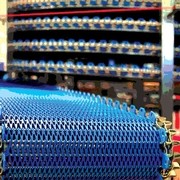There is often a struggle between the food safety/quality department and maintenance. This series of articles is to provide background and practical solutions to assist both parties to find common ground.
Food safety professionals expect all processors, large and small, to have prerequisite programs in six areas:

• Sanitation Standard Operating Procedures
• Good Manufacturing Practices
• Preventive Maintenance
• Product Identification
• Traceability and Recalls
• Education and Training
Preventive maintenance is not only a prerequisite program, it is also one area where a well-documented program can provide a company not just with significant cost savings but also with data for future savings. In the context of food safety management, well-maintained equipment will ensure that a facility runs smoothly, works properly, helps ensure the production of safe foods and provides a means to document performance.
A number of foodborne outbreaks have been directly attributed to failure to properly maintain equipment under sanitary conditions. One of the most famous was the type E botulism outbreak of the early 1980s that was caused by improperly performing can reformers. The problems with the reformers led to more intense monitoring of these units and their eventual phase-out in favor of nested cans. Improper equipment maintenance was once a major cause of foreign materials complaints. However, with increased use of metal detection systems and an enhanced commitment to maintenance programs, foreign material complaints are now far fewer.
But preventive maintenance is much more. It protects equipment, extends said equipment’s life and enhances operating efficiencies. There are many other preventive maintenance activities that we take for granted. Most people see their dentist once or twice a year to have their teeth cleaned to ensure that they last and to minimize cavities. Additionally, who doesn’t bring their car in for a checkup before a family vacation? The last thing anyone wants to do on a summer vacation is break down in the middle of nowhere. The bottom line is that preventive maintenance provides peace of mind for people and food processors, and is one program where benefits, both quality and economic, can be measured.
Starting Out
Perhaps the best way to begin developing a preventive maintenance program is to take inventory. There are different ways to do this. A small facility might make a master list of all equipment requiring maintenance, whereas a large facility can set up their master list by processing line or process area. The master list (Figure 1) should include the following:

- Equipment name
- Location
- Serial number
- Description
- Maintenance schedule
- Responsibility
- Procedures
For most pieces of equipment, there are several different maintenance schedules. There is routine maintenance, that is, what is done daily, lubrication schedules and different kinds of more complex maintenance. As an example, it is normal in most operations to shut down a piece of equipment at least once a year for a complete check. However, the schedule may also call for replacing gaskets or some other item every month. Therefore, the bottom line is that for each piece of equipment, there are several levels of maintenance.
When establishing maintenance schedules, a risk assessment on each piece of equipment should be conducted. How important is that operation or activity to product quality, safety or legal compliance? Let’s look at something as simple as a gasket. Too many processors let gasket changing or inspection slide. But if a gasket breaks down and the company ends up with a foreign materials complaint or spoilage, they suddenly get religion. Gasket inspection or replacement is deemed a high-risk activity and must be scrupulously adhered to. When this exercise is done, the company will have established high-, medium- and low-risk activities. Based on the risk assessment, the operation may decide to perform maintenance activities more or less frequently.
Author: Richard F. Stier
This article was published with permission from Food Safety Magazine
http://www.foodsafetymagazine.com/magazine-archive1/april-may-2012/preventive-maintenance-an-essential-prerequisite-for-food-safety/
Supplier Links
Need help setting up a maintenance system? View our supplier directory
Business Development Engineering
Geesmo
About the Author
Richard F. Stier
Article reproduced with permission from Food Safety Magazine Source: Food Safety Magazine
http://www.foodsafetymagazine.com/magazine-archive1/april-may-2012/preventive-maintenance-an-essential-prerequisite-for-food-safety/





